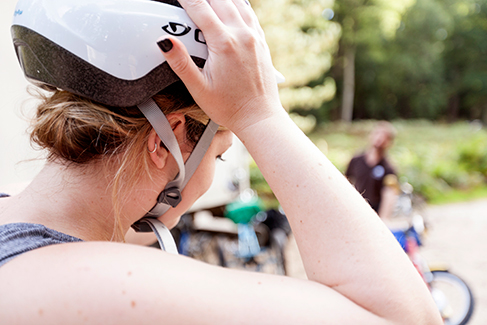Cycle Code
 The New Forest is a working forest, with forestry, farming and equestrian activity on its narrow roads and tracks. Ponies, cattle and other animals are free to roam the Forest and most of its roads. Be aware that animals are easily startled and may suddenly move into your path.
The New Forest is a working forest, with forestry, farming and equestrian activity on its narrow roads and tracks. Ponies, cattle and other animals are free to roam the Forest and most of its roads. Be aware that animals are easily startled and may suddenly move into your path.
Off road cycling in the New Forest is permitted only on certain routes. Please take a look at our Cycling Routes for more information on this.
To assist you in making the most of cycling in the New Forest, we ask that you please follow both the Highway Code and this New Forest Cycling Code which is supported by cycling groups and local organisations.
If you are cycling in an organised event, follow the additional instructions to minimise your impact.
Be considerate
- Ride positively and well clear of uneven road edges but with consideration for other road-users. To allow vehicles to overtake safely, leave gaps for them to pull into and move into single file when necessary and safe to do so. Never ride more than two abreast.
- Off road, cycle only on the waymarked network of Forestry Commission tracks, bridleways, byways, restricted byways and designated routes.
- Use this map to plan your route, check for route closures, and try to be off Forest tracks by sunset.
- Be polite to other cyclists, motorists, pedestrians and residents.
- When passing people and animals, use your bell or call out a warning and allow them plenty of room. Be prepared to stop if necessary.
- Do not drop litter or feed the animals; human food and litter are a danger to them.
- Close gates behind you so the animals don’t stray
- Respect the quiet of the Forest.
Be safe
- Pass animals slowly and to one side if possible.
- Take extra care near horse riders; a kick or fall from a horse could be fatal. Be prepared to stop. Use your bell or call out a friendly warning well in advance. When it is safe, pass wide and at walking pace, to one side only. Look out for any reaction from the horse.
- Keep to a safe speed, on and off road, particularly on narrow lanes, steep hills and bends. Look out for pot holes, poor surfaces and cattle grids.
- Look out for and obey safety signs. Do not pass large vehicles and trailers until you know it is safe to do so.
- Ensure you are visible by wearing bright or reflective clothing. Use lights after dark and in poor daytime visibility.
- Avoid the use of earphones.







